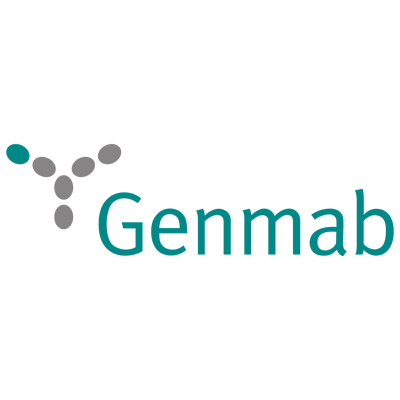This article first appeared on GuruFocus.
-
Total Revenue Growth: 21% increase over the past 9 months.
-
Operating Profit Growth: 52% increase while making strategic investments.
-
Cash Position: Ended the first half with approximately $3.4 billion in cash.
-
Recurring Revenue Growth: 26% increase, driven by royalties from Darzalex and Casimpta.
-
Darzalex Net Sales: Nearly 22% growth, totaling $10.4 billion for the first nine months.
-
Royalty Revenue from Darzalex: Over $1.7 billion.
-
Proprietary Portfolio Sales: E Kinley and Tibdac sales up 54% year over year, accounting for 25% of total revenue growth.
-
E Kinley Sales: $333 million through Q3, a 64% year over year increase.
-
Tibdac Year-to-Date Sales: $120 million.
-
Total Operating Expenses: $2.025 billion for the first nine months, up 7% from the same period last year.
-
Net Profit: $932 million.
-
Effective Tax Rate: 18.9% with a tax expense of $217 million.
-
2025 Financial Guidance: Revenue expected between $3.5 to $3.7 billion, with operating profit between $1.1 to $1.4 billion.
Release Date: November 06, 2025
For the complete transcript of the earnings call, please refer to the full earnings call transcript.
-
Genmab AS (NASDAQ:GMAB) reported a 21% increase in total revenue over the past nine months, driven by increased recurring revenue.
-
Operating profit grew by 52%, demonstrating strong financial performance despite strategic investments.
-
The company has a robust cash position with around $3.4 billion, providing flexibility for continued growth and expansion.
-
Genmab AS (NASDAQ:GMAB) is advancing its pipeline with promising data from Abilian and Renas, including additional phase 3 clinical trials for Renas.
-
The proposed acquisition of Meisis is expected to accelerate Genmab AS (NASDAQ:GMAB)’s shift towards a 100% owned model, expanding and diversifying its revenue streams.
-
The data for 1,042 in frontline head and neck cancer did not meet the high bar for continued development, leading to its termination.
-
There is a competitive landscape for Peto and Rena F, with other companies developing similar therapies.
-
The company faces challenges in expanding its market presence, particularly in new regions like China.
-
There are concerns about the near-term growth opportunity for Ekinley in second-line follicular lymphoma, with potential gradual uptake.
-
The financial guidance for 2026 remains uncertain, with potential impacts from interest expenses and the integration of the Meisis acquisition.
Q: Coming out of Esmo, there’s been a lot of discussion around the competitive landscape of Peto and Rena F. What are your thoughts on how these drugs are positioned in the competitive landscape and what gives you confidence in their potential as key growth drivers? A: Tahamtan Ahmadi, Chief Medical Officer, explained that there were no surprises from Esmo, and they remain confident in Peto and Rena as best and first-in-class assets in their respective indications. Peto is seen as a best-in-class second-generation EGFR bispecific, with ongoing phase 3 trials in head and neck cancer. Rena has shown promising data in endometrial cancer, and they are confident in its potential across various indications.
Q: Can you comment on the commercial dynamics of Ekinley, particularly in terms of usage between follicular and DLBCL indications, and the near-term growth opportunity in second-line follicular lymphoma in the US and China? A: Brad Bailey, Chief Commercial Officer, stated that they are encouraged by Ekinley’s performance and do not split sales by indication. The dual indication and subcutaneous administration are beneficial. The second-line follicular lymphoma market is seen as a significant opportunity, with approximately 9,000 patients in the US, and they expect growth as they move into earlier lines of therapy.
Q: Could you elaborate on the decision to terminate the clinical development of 1,042 in first-line head and neck cancer and its implications for future development in other indications? A: Jan G. J. Van De Winkel, CEO, explained that the data from 1,042 in combination with chemo and Pembro in frontline head and neck cancer did not meet their high bar for continued development, leading to its termination. This decision was based on the most relevant data set, and they will focus on other promising assets.
Q: What are your thoughts on the upcoming potential approval of Ekinley in November, especially regarding US representation in clinical trials? A: Tahamtan Ahmadi, Chief Medical Officer, expressed confidence in the upcoming approval, stating there is no indication that it will not be approved in the US in the coming weeks. They are optimistic about Ekinley’s performance and its potential approval.
Q: How do you view the colorectal opportunity for Peto, and do you feel a subcutaneous formulation is necessary to compete with emerging competition? A: Tahamtan Ahmadi, Chief Medical Officer, acknowledged the early and encouraging data in colorectal cancer but emphasized that their focus remains on head and neck cancer. They are considering subcutaneous administration as part of lifecycle management, but their current focus is on executing ongoing studies.
For the complete transcript of the earnings call, please refer to the full earnings call transcript.
